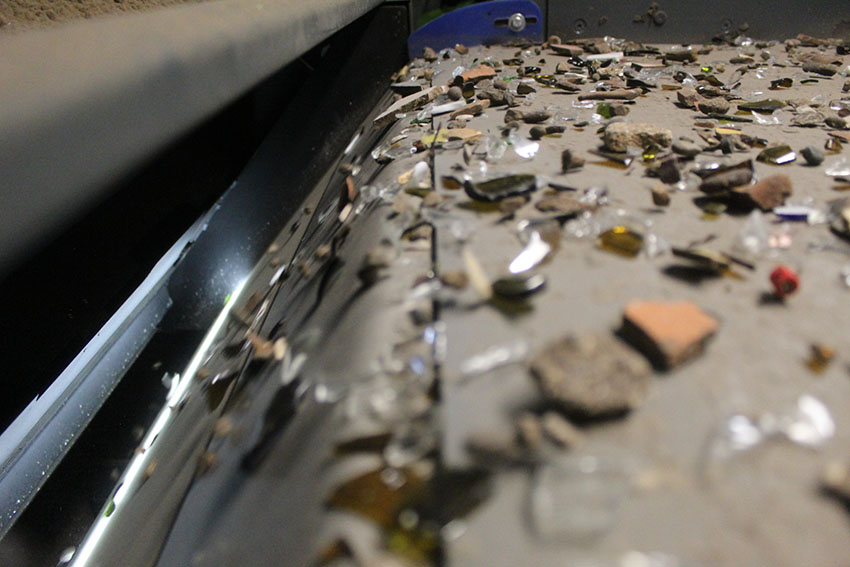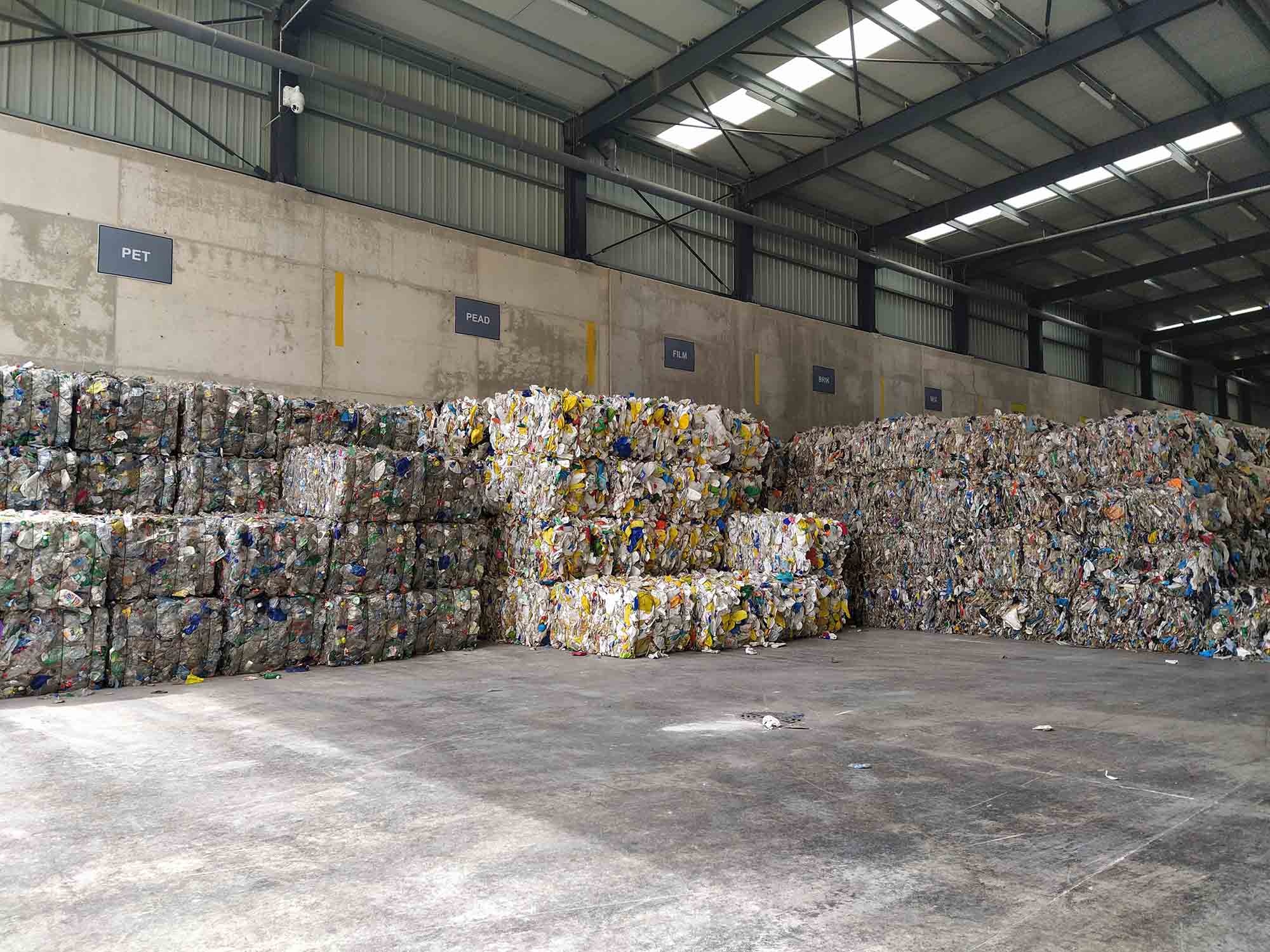PICVISA is an innovative technology-based company that offers solutions based on robotics, artificial intelligence (AI) and machine vision to the recycling sector and other industries. By combining AI with Machine Vision, the company manages to give automated systems decision-making and responsiveness skills unprecedented in the industry.
The aim is to boost smart automation within the waste management industry and others. PICVISA accumulates more than 20 years of experience in the design, development and manufacturing of sorting equipment for different materials.
Easy Engineering: Which are the most futuristic products/ solutions from your portfolio?
PICVISA: Our more futuristic products are the ECOPICK, an intelligent robot, and the ECOFLOW, a flow analyzer, both of them based on AI.
As mentioned, ECOPICK is an AI based robot that recognizes and classifies a wide variety of objects on a conveyor belt, replacing the tasks usually performed by a manual triator. Its waste classification tasks consist of carrying out quality control of materials. In addition, the automated extraction of valuable materials contained in the flow of “rejects”.
The ECOFLOW is an AI-based flow analyser. With this product, we are able to analyse your material flow to obtain valuable information for decision-making. It is the fastest way to turn a facility into the industry 4.0

E.E: What are the characteristics of these products/ solutions?
PICVISA: The core features of these products are the technologies that run through them: AI and machine vision. The purpose is to get the machines to understand and acknowledge a scene or to identify an object in a changing context. Combining AI and Machine Vision, we achieve image recognition. Through the analysis and interpretation of the content of the image or video, numerical or symbolic information is extracted so that a computer can treat it, and thus the appropriate output is given in a specific situation or in an industrial process.
E.E: What are the benefits for the users?
PICVISA: Economic, environmental and social benefits are obtained for the whole society from our recycling solutions.
Economic impacts are mostly referred to the recovery of recycling materials that before the PICVISA solutions were considered as refuse. The sale of recyclable materials will provide revenues for companies adopting the PICVISA technology, while avoiding landfill or incineration costs for such material streams.
Environmental benefits are related to the reclamation of a wide range of recyclable waste (plastics, metals, glass, paper and cardboard, etc.) that has not been sent to landfill or incineration.
Social impacts concern the contribution of strengthening the EU’s industrial technology base in waste management, electromechanical equipment manufacturing and the development of AI solutions, creating growth and new jobs in the EU itself and in the regions where European companies operate.
In addition, AI can speed up any repetitive process. What problems can be solved by this? Here are just a few examples:
- Detection of specific products or materials on a triage belt. Let us consider fruit classification as an example: with AI, we could know the ripening point of each piece to then classify them.
- Flow analysis. By installing different AI inspection points in the same production process, we could a priori detect the material that will reach the rest of the process. Thus, optimizing machines to identify the type of material we know will enter the flow.
- Quality control. We can use AI to detect and analyze faults to see which elements are malfunctioning. If we add data analysis, we could even use predictive analytics and take action before the fault occurs.
The recycling facilities that already operate with our AI-based robot ECOPICK have lowered production costs and boosted the quality of the waste recovered.
E.E: How do you focus these ranges for the future?
PICVISA: The future of PICVISA is to change its business model, transforming the company into a service provider. For example, we have created a new space called PICVISA LAB where we are developing all the solutions that our clients and stakeholders are demanding us in a fully collaborative environment.
As another example, the firm and its parent company, Calaf Grup, have developed a demonstration plant at its Barcelona headquarters over the past two years with the support of R&D grants from the LIFE program, managed by the European Commission’s CINEA agency (LIFE PST SORT project: Grant Agreement LIFE17 ENV/ES/000168). The demonstration plant provides a fully automated and cost-effective solution to recover recyclables from the reject streams of other waste treatment systems, such as ASR from ELVs, WEEE rejects, industrial and municipal solid waste, etc. The Test Center is available to any PICVISA customer to carry out their own tests.

E.E: How will your products/ solutions make work more efficient for users?
PICVISA: PICVISA’s AI solutions offer the industry innovative equipment able to reproduce some human-thinking capabilities. By combining AI with Machine Vision, we aim to boost smart automation in different industries, thus achieving cost reductions, production maximization, generation of new businesses, etc.
E.E: How does the digital transformation affect your products / business?
PICVISA: PICVISA has emerged as a key partner in the digitalization of the waste management and sorting sector. We support and accelerate our client’s businesses offering them the possibility to move from buying machines to contract smart asset services.
Thanks to the firm commitment to innovation, the company has been able to convert sorting machines into connected devices that generate data. This data, when processed, translates into several benefits such as the possibility of carrying out predictive maintenance to prevent unscheduled machine downtime. By being able to monitor the performance of the machine almost instantly, the detection time of production failures and their analysis is reduced. In addition, production is maximised as sorting equipment can be optimized quickly.
E.E: Tell us something about sustainability and efficiency in the future.
PICVISA: In today’s ever-evolving world, debating whether to incorporate sustainability into your business strategy is no longer an option. Considering a values-driven approach when developing business strategies can be vital to long-term success.
Sustainability does not mean sacrificing profits or putting success on the backburner. Instead, it has become a crucial element to any organization’s successful strategy. A business that does not factor in sustainability risks is less successful in several measures, including profitability, growth, and employee retention.
E.E: How do you think the future will look like in your field in the following years?
PICVISA: The future waste treatment plants will include three fundamental aspects:
- The facility will be a smart plant in the sense that it will be capable of adapting to changes in the composition and quantity of materials to be treated.
- It will be a very safe plant. In order to do so, it will be necessary to monitor operations remotely and avoid human contact with waste. The plant of the future will be a facility where the production process stops when an access door opens.
- The plant must be prepared to recover 100% of the materials present in the waste flow.
In order to meet the three points outlined above, it is undoubtedly necessary for a plant to be automated, digitalized, and sensorised.

E.E: What technologies do you think will grow this year/ in the following years?
PICVISA: The latest developments like deep learning, robotics, big data, the Internet of Things, augmented and virtual reality have enabled the development of prototypes to test their potential in the waste treatment facilities.
Some remarkable features of the technologies that will grow over the next years:
- AI to know the real-time composition of waste streams online.
- RFID systems to provide greater traceability for all the materials selected, better stock and warehouse management and optimization for logistics at waste management facilities.
- Dual systems of advanced robotics to improve the capacity for waste selection, obtaining a greater number of higher-quality materials.
- Virtual reality applied to learning and simulation for maintenance, breakdowns, or as training for plant staff, prior to operation.
- Augmented reality for allocating machinery, as an interface for maintenance management, and as an improvement system for self-protection and safety conditions for the workers.
- Data processing, smart software and sensors in order to predict, control, plan, and produce intelligently, generating greater value along the entire chain.

